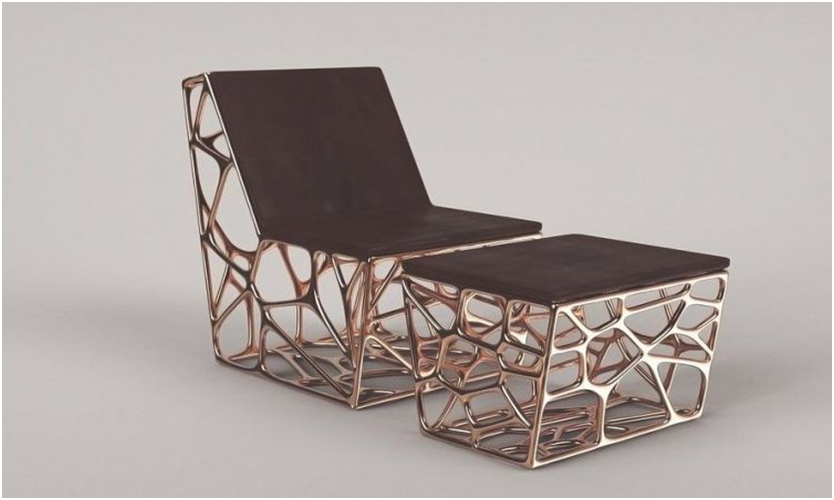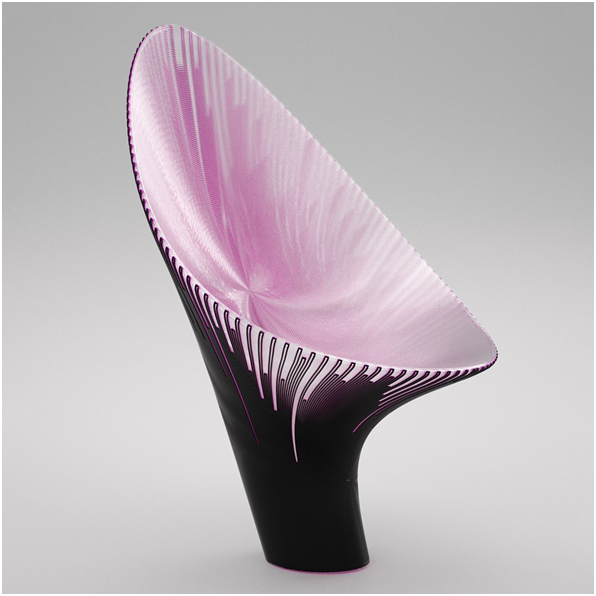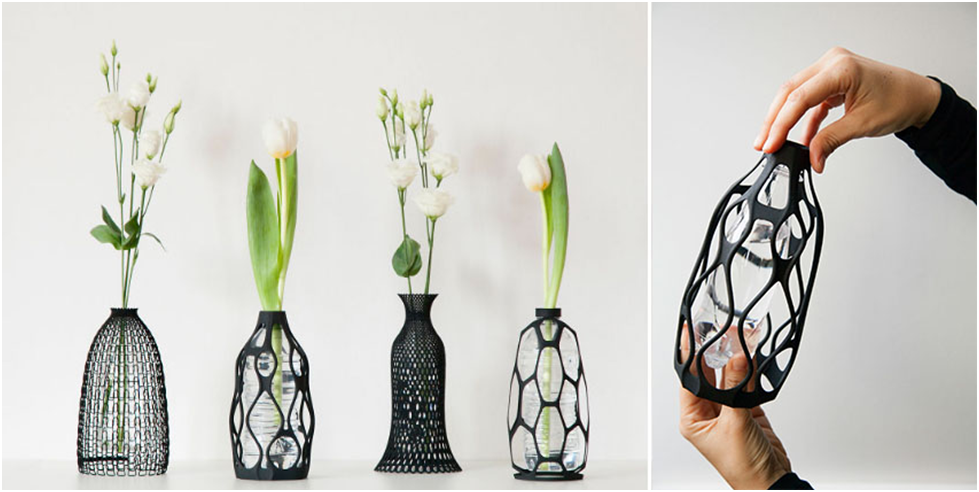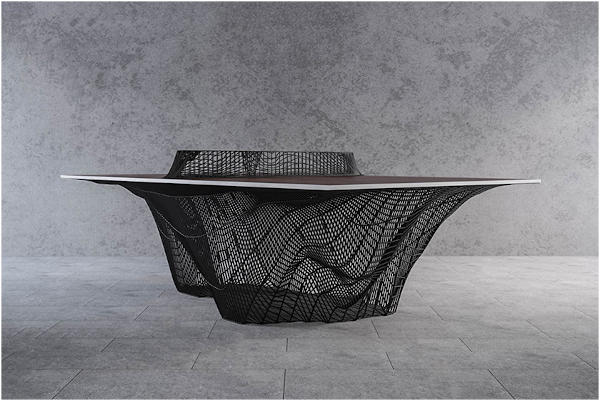
Charles R. Goulding and Peter Favata find that the idea of 3D printing sits comfortably for designer furniture.
In a recent Financial Times article, the heading read that for design, 3D printing is entering “into the next dimension”. The furniture industry sales are estimated to be $509.8 billion in 2020 and forecasted to reach $650.7 billion by the year 2027. In recent years people have been turning to 3D printing to create some very unique designs ranging from desks, chairs, sofas, and vases just to name a few. 3D printing allows designers to create furniture pieces that would not be possible to produce using traditional manufacturing processes. As a result, many leading furniture designers have implemented additive manufacturing into their design process.
3D Printed Chairs

3D printing allows for intricate designs that work very efficiently when manufacturing chairs. Some of these chairs made by luxury brands can end up costing tens of thousands of dollars.
The chair pictured above would have taken weeks to create by hand-carving in order to construct, as opposed to 3D printing where it only takes a matter of hours.
3D Printing Vases

Another furniture piece that can benefit from 3D printing is vases. We published a Fabbaloo article on 3D printed vases in March of 2020 that can be viewed here. Vases have many different designs that can be expanded by 3D printing. Though CAD programs designers can produce vases with very intricate designs that would be impossible to produce through traditional means.
3D Printed Tables

Tables are another furniture piece that can utilize 3D printing to make design improvements. Not only can 3D printing expand the possibilities for design but help the environment as well. Often table construction uses a lot of wood or other materials, while 3D printing can reduce materials which is environmentally friendly while providing a faster production rate. You can observe manufacturers and designers utilizing 3D printing to produce products ranging from small desks and coffee tables to full-sized ping pong tables.
The Research & Development Tax Credit
Whether it’s used for creating and testing prototypes or for final production, 3D printing is a great indicator that R&D credit-eligible activities are taking place. Companies implementing this technology at any point should consider taking advantage of R&D Tax Credits.
Enacted in 1981, the now permanent Federal Research and Development (R&D) Tax Credit allows a credit that typically ranges from 4%-7% of eligible spending for new and improved products and processes. Qualified research must meet the following four criteria:
- Must be technological in nature
- Must be a component of the taxpayer’s business
- Must represent R&D in the experimental sense and generally includes all such costs related to the development or improvement of a product or process
- Must eliminate uncertainty through a process of experimentation that considers one or more alternatives
Eligible costs include US employee wages, cost of supplies consumed in the R&D process, cost of pre-production testing, US contract research expenses, and certain costs associated with developing a patent.
On December 18, 2015, President Obama signed the PATH Act, making the R&D Tax Credit permanent. Since 2016, the R&D credit can be used to offset Alternative Minimum Tax (AMT) or companies with revenue below $50MM and, startup businesses can obtain up to $250,000 per year in cash rebates that can be applied directly to payroll taxes.
Conclusion
The need for furniture is growing in 2020 with people spending more time at home. The home-sale market is very strong in certain regions. Many people have been redesigning their houses after a strong housing furniture sales market increase. 3D printing allows furniture designers to expand their possibilities that fit very well with modern designs as well as some art deco design trends. No matter what design you like the use of 3D printing can help all different styles and designs.
